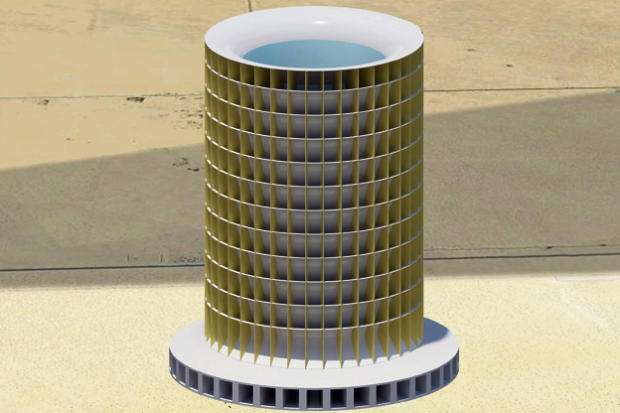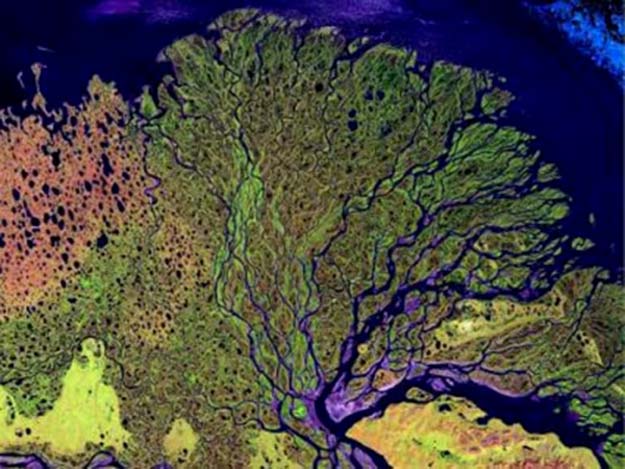While Thais are always up for a good celebration, and certainly celebrate the western and the Chinese New Years with gusto, the most popular and important celebration in the Thai calendar is the Songkran Festival – the traditional Thai New Year. Previously calculated astrologically, the Songkran Festival is now fixed on the 13th to the 15th of April. It’s not unusual for Thais to take their holiday time from work during this week, and all of Thailand shuts down for at least 13 – 15 April. Read more
Archive for Article
In Depth: Desert skyscrapers could be a wind ‘game-changer’
Construction of two sky-scraping wind-driven “downdraft towers” that could eventually supply electricity to more than three million homes is on track to start in 2014, after Clean Wind Energy (CWE) was given the green light to proceed with the 5GW mega-project.
“The concept has been around for 30 years — but how to build a tower of the size needed is the thing” – Ron Pickett.
The US company’s revolutionary power-station concept, to be built on a 6,880-hectare site near San Luis, southwest Arizona, is based on what would be the world’s tallest man-made structure — a 914-metre hollow tower — outfitted with a water-spray system. Read more
The Secret of Sea Level Rise: It Will Vary Greatly by Region
For at least two decades now, climate scientists have been telling us that CO2 and other human-generated greenhouse gases are warming the planet, and that if we keep burning fossil fuels the trend will continue. Recent projections suggest a global average warming of perhaps 3 to 4 degrees C, or 5.4 to 7 degrees F, by the end of this century.
But those same scientists have also been reminding us consistently that this is just an average. Thanks to all sorts of regional factors — changes in vegetation, for example, or ice cover, or prevailing winds — some areas are likely to warm more than that, while others should warm less. Read more
The Great Water Heist
Picture two snowmen standing side by side beneath a spring sun. One is pristine white, the other has been coated with rusty brown dust. As the day wears on, a pool of water collects beneath the dusty snowman. He will dissolve long before the untarnished snowman loses his head.
The dusty snowman’s rapid demise occurs because the dark color decreases snow’s ability to reflect sunlight. The particles absorb it and conduct heat to the snowman’s body. The same process appears to have been playing out on a larger scale for 150 years in the mountains of the Upper Colorado River Basin, the birthplace of the Colorado River. Read more
A River Runs Through It: Scientists Explain Arctic Mercury
Scientists have been explaining for years that the Arctic is a key region when it comes to climate change, what with thinning ice, melting permafrost and the loss of habitat crucial to the survival of major species including seals, walruses and polar bears.
Now, says a study just published in Nature Geoscience, we can add one more insult to the Arctic ecosystem that may well be at least partly climate-related: significant amounts of toxic mercury flushed into the Arctic Ocean every spring by three mighty rivers most Americans have probably never heard of: the Lena, the Ob, and the Yenisei, all of which flow north through Siberia.
“We’ve known for a long time that there’s a high concentration of mercury in Arctic biota,” said the study’s lead author, Jenny Fisher, a postdoctoral fellow with Harvard’s Atmospheric Chemistry Modeling Group in an interview. Once the neurotoxic (nerve-killing) heavy metal gets into the food supply, it doesn’t break down. Instead, it gets concentrated as bigger animals eat smaller animals on up the food chain, from plankton to fish to seals on up to polar bears, and also the indigenous Inuit, who get much of their nourishment through hunting.
Environmental experts have assumed that the mercury gets up to high latitudes through the atmosphere. It’s belched out through smokestacks of coal-burning power plants and other industrial sources and wafts up into the air, where it can circulate for a year or more before being washed out by precipitation. It all made sense in a general sort of way. Read more





